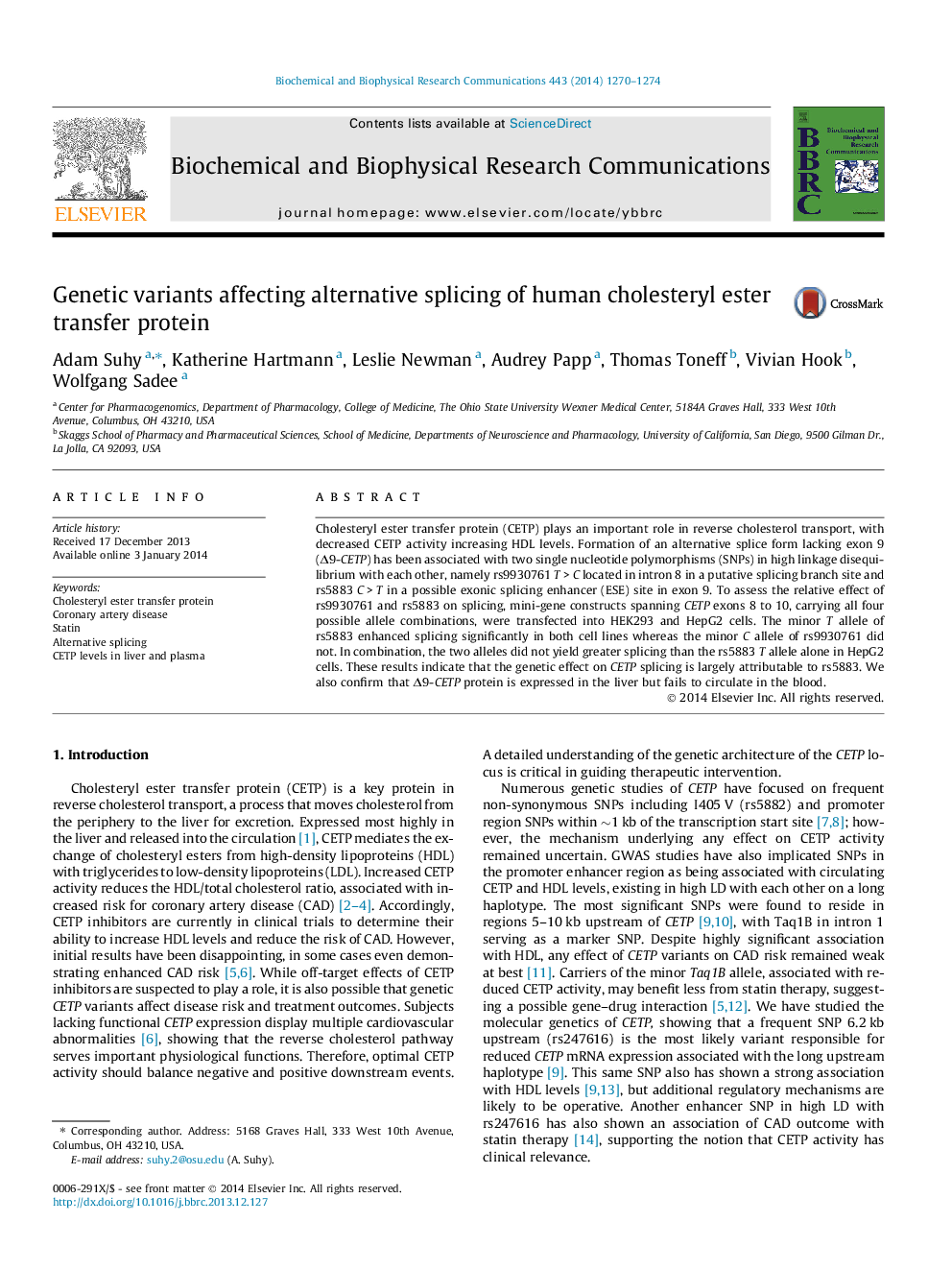| Article ID | Journal | Published Year | Pages | File Type |
|---|---|---|---|---|
| 10756602 | Biochemical and Biophysical Research Communications | 2014 | 5 Pages |
Abstract
Cholesteryl ester transfer protein (CETP) plays an important role in reverse cholesterol transport, with decreased CETP activity increasing HDL levels. Formation of an alternative splice form lacking exon 9 (Î9-CETP) has been associated with two single nucleotide polymorphisms (SNPs) in high linkage disequilibrium with each other, namely rs9930761 TÂ >Â C located in intron 8 in a putative splicing branch site and rs5883 CÂ >Â T in a possible exonic splicing enhancer (ESE) site in exon 9. To assess the relative effect of rs9930761 and rs5883 on splicing, mini-gene constructs spanning CETP exons 8 to 10, carrying all four possible allele combinations, were transfected into HEK293 and HepG2 cells. The minor T allele of rs5883 enhanced splicing significantly in both cell lines whereas the minor C allele of rs9930761 did not. In combination, the two alleles did not yield greater splicing than the rs5883 T allele alone in HepG2 cells. These results indicate that the genetic effect on CETP splicing is largely attributable to rs5883. We also confirm that Î9-CETP protein is expressed in the liver but fails to circulate in the blood.
Related Topics
Life Sciences
Biochemistry, Genetics and Molecular Biology
Biochemistry
Authors
Adam Suhy, Katherine Hartmann, Leslie Newman, Audrey Papp, Thomas Toneff, Vivian Hook, Wolfgang Sadee,
